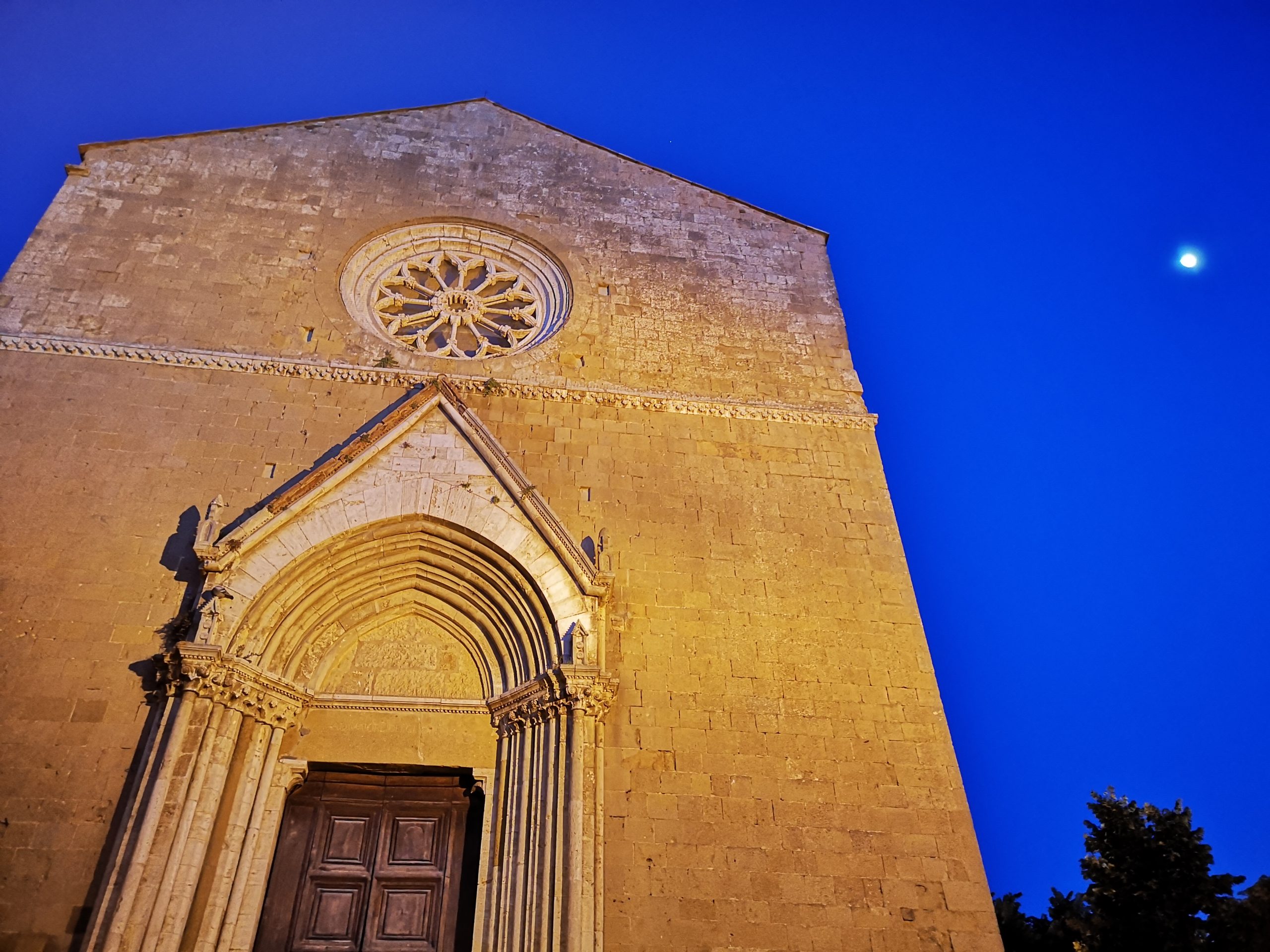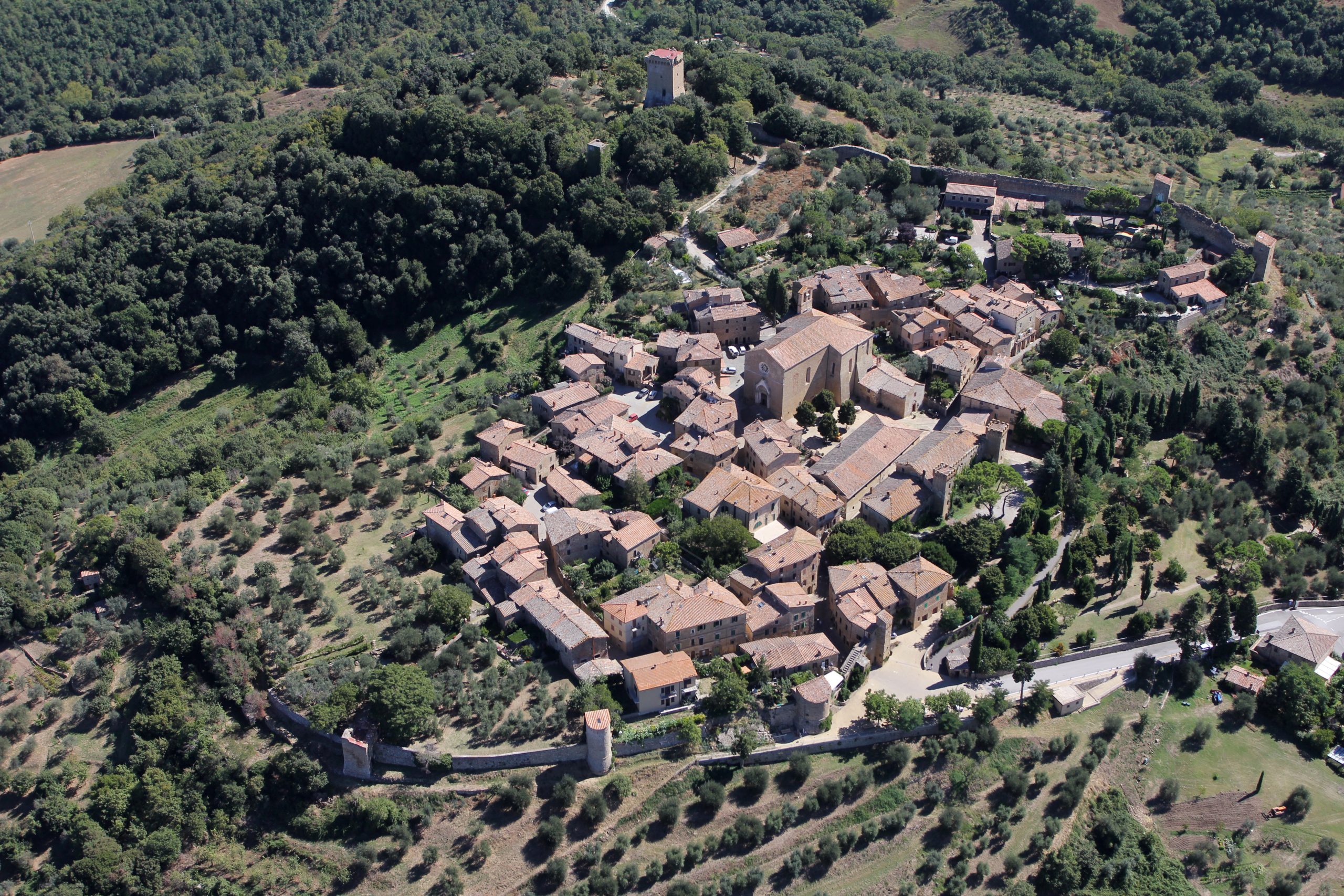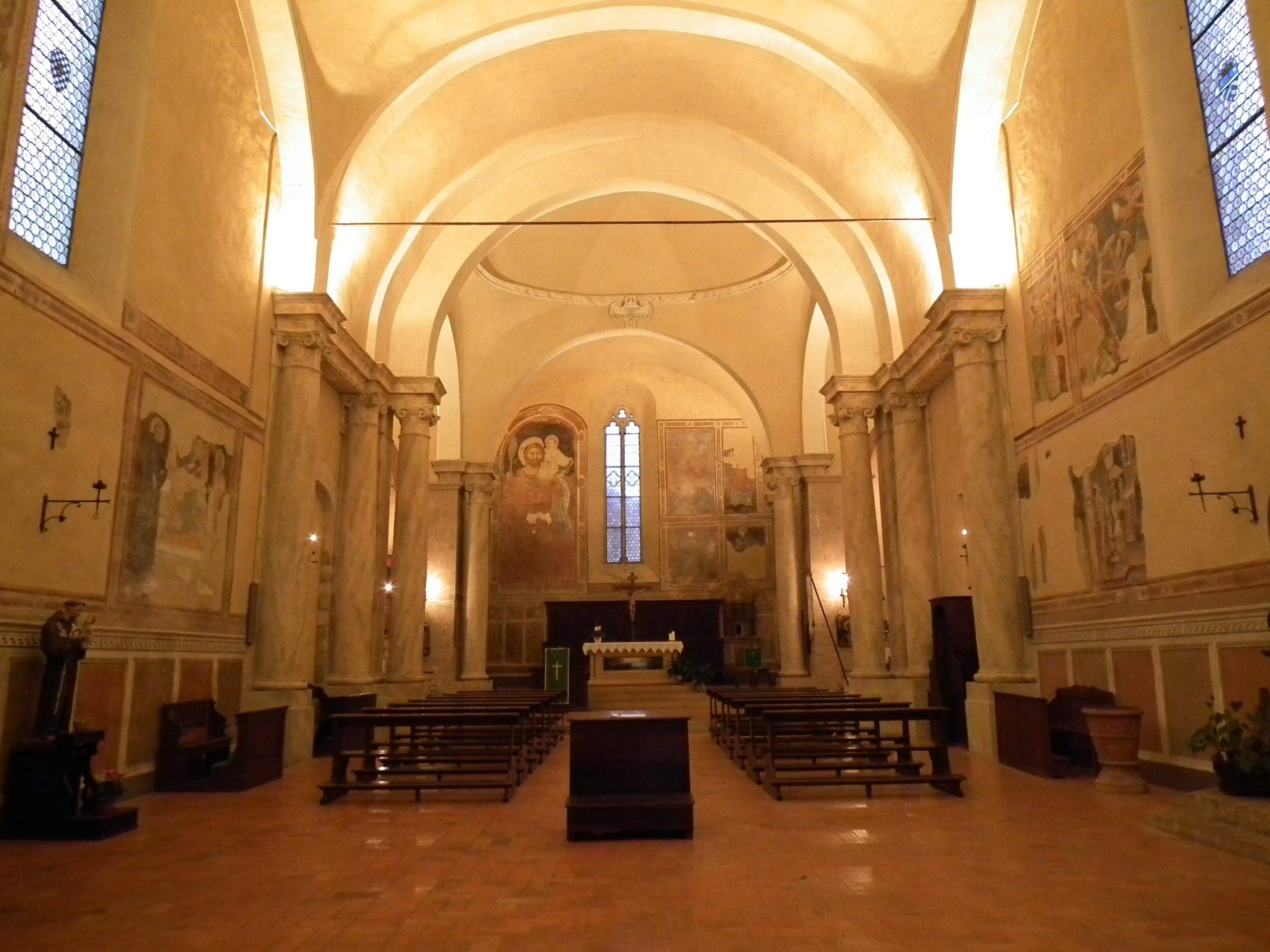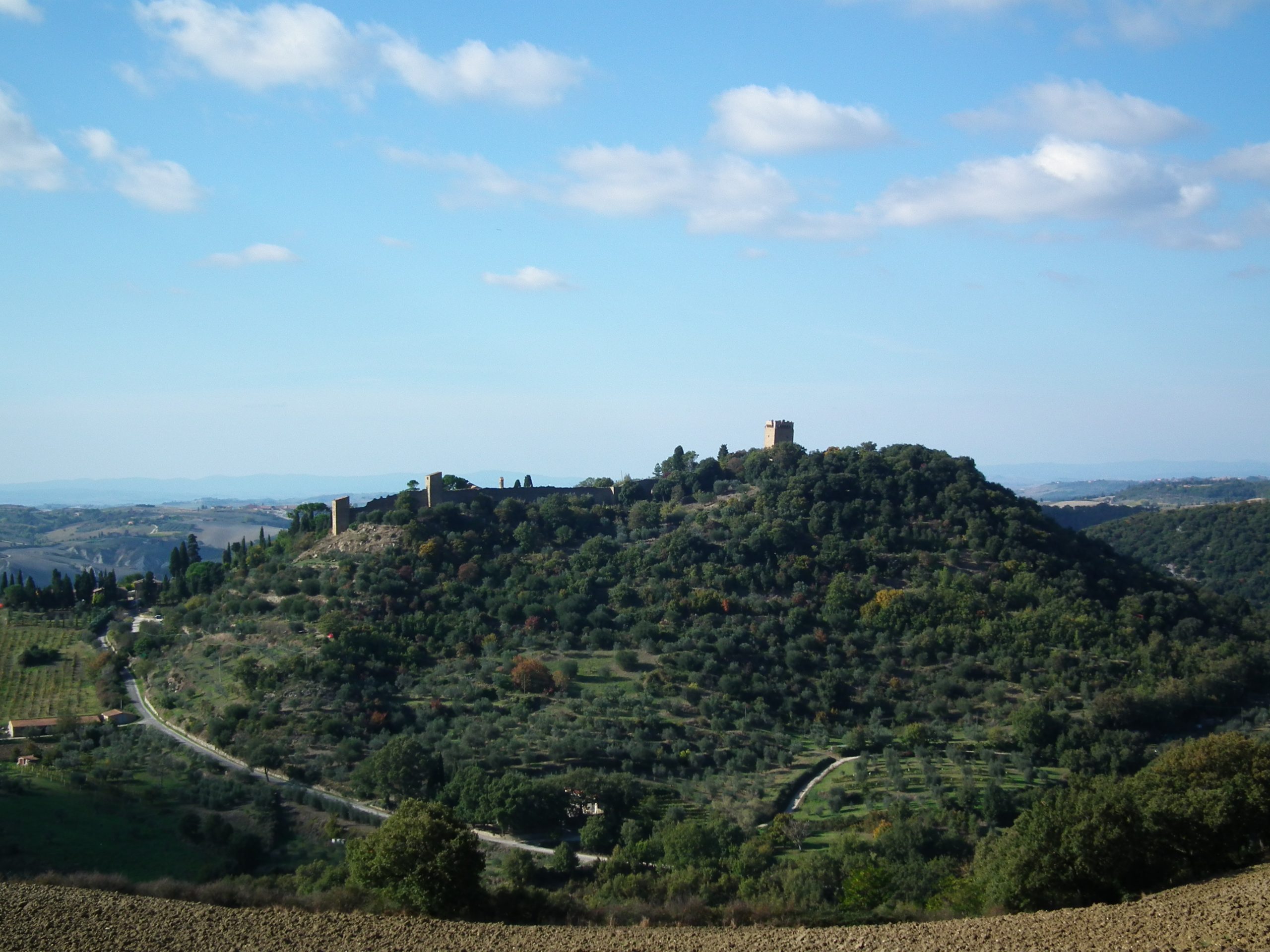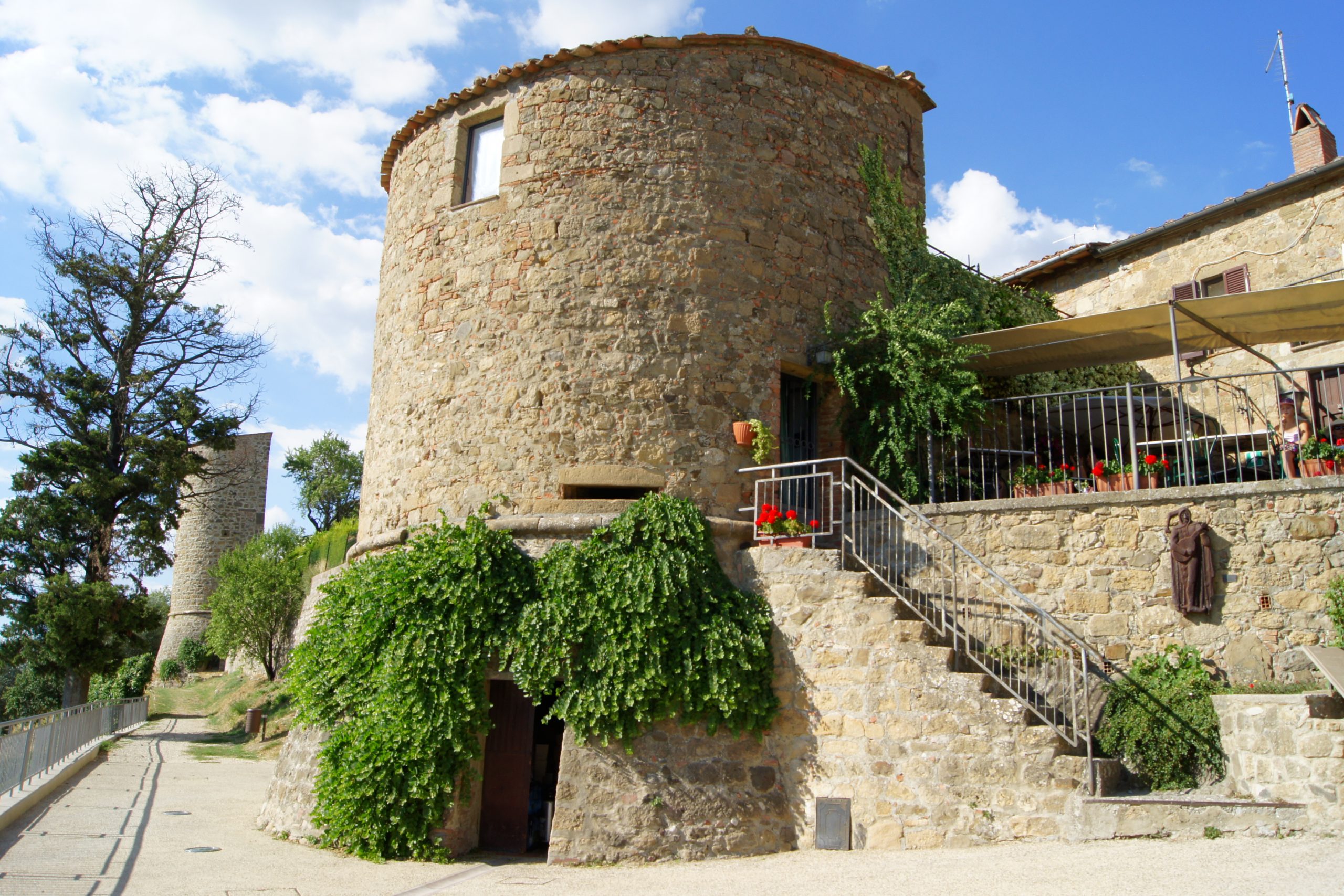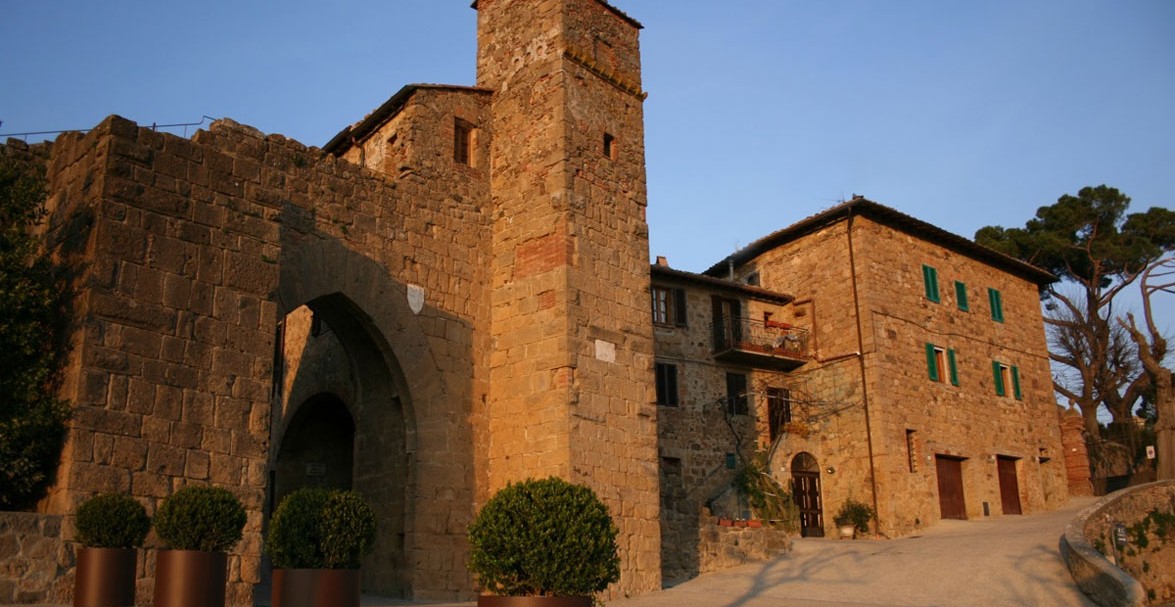Seen from a distance, Monticchiello is simply a firm, stumpy tower on the top of a hill. The remains of its formidable ramparts, and its medieval gate, are perceivable to the visitor only when we get right up close to the castle keep.
The origins of the settlement are hard to trace. If we insist on finding Roman origins, then we could attach it to the ‘Gens Cloelia’, the Cloelian Tribe, making the name derive from the Latin Mons Cloelii. The earliest documented trace is that Monticchiello is included in alist of castles which were ceded in the year 943 by Lamberto Aldobrandeschi to the Abbey on Monte Amiata. In 1156 it was then gifted by Pope Adrian IV, as a feudal possession, to the Count Paltonieri.
Despite the name of this castle being present in documents from so long ago,  the history of Monticchiello only starts to acquire significance from the 13th century. At that time the inhabitants showed that they were tired of being governed and adminsitered by the Teutonic Knights. This order had been granted possession of the castle by the Roman Church, as a recognition of their role in the defence of the holy places in Jerusalem. The Monticchiellesi decided instead to adhere to the Republic of Siena, of which they became loyal allies.
the history of Monticchiello only starts to acquire significance from the 13th century. At that time the inhabitants showed that they were tired of being governed and adminsitered by the Teutonic Knights. This order had been granted possession of the castle by the Roman Church, as a recognition of their role in the defence of the holy places in Jerusalem. The Monticchiellesi decided instead to adhere to the Republic of Siena, of which they became loyal allies.
The first document which relates to the independent Commune of Monticchiello is dated 1243. This year marks the beginning of the most vibrant and glorious period of the settlement: the completion of the castle keep (Cassero), of the ramparts, and of the church. Agriculture improved, the population increased, and a sense of community and civic identity reached a peak of development. The Commune established its own statutes in the vernacular tongue, and the population took and active part in local political life, making its voice heard in the Consiglio di uno per famiglia, a legally constituted body in which every family was represented.
In the middle of the 16th century, the war fought on Italian soil between France and Habsburg Spain brought an end to the history of this fortress, which on 15 August 1559 was handed over to Francesco da Montaguto, who had been nominated as representative by Cosimo De’ Medici, Duke of Florence. Previously, in 1553, Monticchiello had undergone a siege by Florentine and Imperial Habsburg troops. This surrender was followed by a period of deep decline, in which trade and craft production stagnated. The system of sharecropping (mezzadria) was gradually installed in the countryside. Local government structures withered, without any renewal; until on 26 June 1778 the Grand Duke of Florence Pietro Leopoldo put an end to the Commune of Monticchiello and placed it under the jurisdiction of the Commune of Pienza. The Risorgimento, the Unity of Italy in the 19th century, was achieved elsewhere and for Monticchiello it was a distant echo.
 During the First World War, Monticchiello made its contribution to the patriotic sacrifice: out of 750 inhabitants, 31 soldiers lost their lives.
During the First World War, Monticchiello made its contribution to the patriotic sacrifice: out of 750 inhabitants, 31 soldiers lost their lives.
The bravery and tenacity of the Monticchiellesi were then particularly tested and proved in the spring of 1944.
On 6 April of that year, Giorgio Alberto Chiurco, who was Prefect of Siena under the Fascist Republic, decided to send all the militiamen he had available (around 450) to confront the small but strong group of anti-fascist partisans who were camped in the locality of Monticchiello. After a long battle, the fascist detachment was forced into a rapid retreat. At dawn the following morning, a German platoon arrived in Monticchiello with clear orders to sack the whole area and shoot the inhabitants of the village. The soldiers burst into all the houses, arrested all the people, and lined them up under their machine guns in front of the wall beside the village gate. The massacre was avoided thanks to the intervention of Irma Angheben, the German wife of the principal landlord in Monticchiello, supported by the parish priest Don Marino Torriti. A memorial to this event created by Emo Formichi is now visible outside the gate.
Monticchiello’s long-standing spirit of solidarity has been inherited and celebrated by the Poor Theatre company (Teatro Povero), which has remained as an active sign of the village’s continuing vitality. Every year since 1967 the Teatro Povero has “gone into the square” with a series of stage productions, addressing themes of urgent contemporary relevance.
For a map of the village, click on Monticchiello map


